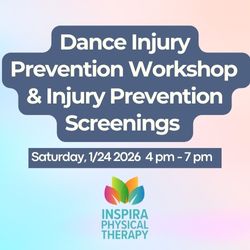Junior Committee
Friday, August 19, 2016
Paying For Auditions
Facebook has become a bit of a lifeline to the working artist. It provides a forum for us to share our work, articles of mutual interest, upcoming shows, classes, and even summer sublets. It is also a place where we are able to freely share our opinions. I recently woke up to my Facebook feed all aflutter. It was over a single post from Raja Feather Kelly, dancer, choreographer, and in this instance, cherub trumpeter for the freelancing dancer.
“I just don’t think dancers should pay to audition. NO!”
This single post garnered 576 “likes” and 13 “shares” and opened a flood of comments, largely of outrage. Names were called, companies were “outed,” feelings were hurt, but more importantly, a can of worms was opened and a necessary conversation about integrity began.
Ask anyone outside the dance world if they would pay a fee to apply for a job and you would get a hard “NO,” and yet, this is an unusually common practice in dance.
There are a ton of questions that come to mind from charging participants fees to audition: Do the paying participants get recognized in the program or at the company’s website for their contribution? Can participants claim their paid fees on taxes in the same way they would for dance classes? If a participant gets cut from a paid audition, can they get their money back (has anyone ever tried that)? Is charging to audition dancers even legal?
The answer to that last question is yes. It is completely legal to charge non-union dancers to audition for a company. Most companies can get away with this gauche practice because, for economic and logistical reasons, dance artists are not generally part of unions. There are exceptions to this, of course: Ballet Hispanico, Martha Graham, and a slew of ballet companies are all protected under the American Guild of Musical Artists.
That being said, does the bulk of concert dance being so separate from the regulated world of theater unions exclude us from having a standard to which we hold ourselves when it comes to how we treat dancers and choreographers? In theater, there is a general knowledge of equity guidelines and, across the board, even the most “bottom of the food chain” theater directors and producers largely look to equity rules as a template for fair business practices.
In fact, according to the Actors’ Equity Association (AEA), it is acceptable in some audition environments to exchange money in the other direction:
“Performers who are required to be at an audition or callback longer than three hours from the scheduled appointment shall be paid at the rate of $15 per hour for the fourth hour and for each additional hour or part thereof.” --Actors’ Equity Association Agreement and Rules Governing Employment under the Off-Broadway Agreement Handbook
The AEA manual goes on to list several other provisions for participants, including the requirements that movement auditions be conducted on sprung floors, purified water be provided (with cups), and heat and air conditioning be available as needed.
I went through the archives of Dance/NYC's audition notices and found that out of the 46 new auditions posted since July 1, 2016, 10 required a fee to audition. Eight of these notices were jobs for paid rehearsals and performances. The 36 no-fee auditions were for performance pay only. Third Rail Projects and 10 Hairy Legs posted audition notices that did not require any kind of fee and promised payment for performances and rehearsals. (Yaaas ethics.) Nimbus Dance Works stipulated in their notice that they would waive their fee of $15 for dancers who took at least two of their choreographic workshops ($40 per class) prior to the open call. The Steps Repertory ensemble charges a fee, and they do not pay their dancers, though ensemble members are given free class.
Speaking of workshops, many companies offer summer and winter intensives that give dancers an opportunity to immerse themselves in a choreographer's process and philosophy. Often, the participants of such intensives (some with price tags upwards of $2400) are the ones most likely to book a future job with the hosting company. These workshops, however, provide a real learning opportunity in which the goal is not to book a job but to gain an artistic experience that is career-positive in the long term. The pay-to-audition model rarely provides participants the same long-term artistic boost.
As the cost of living in New York rises, artists have to be increasingly more calculated in how we spread our resources. What’s alarming about the pay-to-audition model is what it says about the role of privilege in creating a sustainable career in dance. These companies charging fees promise an enticing product: Rehearsal and performance pay, touring experience, and the opportunity to dance in some of New York City’s most renowned dance spaces. If you can afford to pay the fee and take time out of your day to audition, you presumably get to have the career in dance. Those who can’t get left out in the cold.
Ultimately, the questions surrounding this topic transcend the comment section of a Facebook post. That being said, we as artists can create change by advocating for ourselves. Auditions are job interviews. Paying to apply for a job in any other field would never be an acceptable practice, so why are dancers so complacent to stay mum when organizations are asking us to “pay to play”? To that end, if a company feels like they need to charge dancers to audition, how sustainable is that company?



